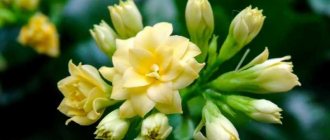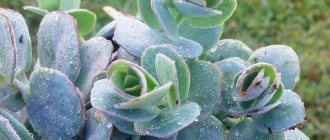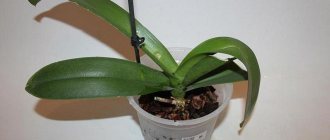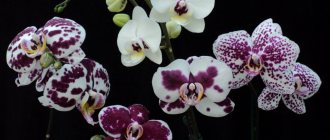What humidity does Kalanchoe need?
Since the last century, Kalanchoe has been gaining popularity among lovers of indoor flowers. This unpretentious culture will not only purify the air in the house, but will also decorate it. For abundant and bright flowering, watering plays a very important role.
As you know, the homeland of Kalanchoe is hot countries. hence its high adaptability to hot, dry weather.
During regular watering, the fleshy leaves accumulate moisture and use it when, for some reason, it is absent.
For normal growth and development of Kalanchoe at home, it is necessary to maintain the humidity level within 50% -60%. Excess moisture or lack of it does not affect the appearance of the succulent in any way. In hot, dry conditions, the short fibers on the leaf blades are able to absorb the required amount of moisture from the air.
IMPORTANT! However, you need to water Kalanchoe according to the regime. This is important for normal long-term flowering.
Normal home conditions are favorable for the flower. Kalanchoe does not need additional spraying; it is enough to take a summer shower for hygienic purposes or simply wipe the leaves with a damp cloth. In winter, during the dormant period, spraying is completely contraindicated; it can cause diseases.
Other rules of care
Before you begin to familiarize yourself with the features of caring for Kalanchoe, please note that in their natural habitat, most varieties of the plant grow in tropical climates. Therefore, in the apartment you should create similar conditions for this crop for its successful flowering and growth.
Lighting
In nature, this plant prefers to grow in open spaces, due to which it receives a large amount of light. That is why it is necessary to choose a window in the apartment that will face the southwest or south side. Thus, the place for keeping the culture should be well lit throughout the day. There is no need to block the window with tulle or a curtain, since the sun's rays do not cause any harm to either the flowers or leaves of Kalanchoe.
There is another secret, thanks to which you can achieve the fastest possible formation of buds from a plant. Being a short-day crop, it prepares to bloom under approximately 10-12 hours of light per day. If you isolate Kalanchoe for 1 month from the sun for the rest of the time, you can wait for the formation of buds.
Soil requirements
When preparing the soil for growing this flower, special attention must be paid to the drainage layer. The fact is that stagnation of moisture can provoke rotting of the root system, as well as the death of even the entire plant. In hot weather, the soil should always be well moistened, but daily watering should be avoided. It is permissible to fill the tray of the container a little with water if you are not sure of the required amount of moisture.
Soil composition
Loose soil, consisting of peat, turf, humus and leaf soil, will provide the crop with all the necessary conditions for excellent growth. Soil that contains a small amount of acid is ideal for growing Kalanchoe at home.
Fertilizers and fertilizers
If you have a Kalanchoe flower at home, then you are probably wondering how to properly care for this crop regarding the application of fertilizers. If a houseplant does not have enough nutrients, it may stop growing, the leaves may turn yellow, brown spots may form on the leaf blades, and there may also be no flowering.
Each case corresponds to a deficiency of a particular microelement. By using fertilizers, you can return the crop to a healthy appearance in a short period of time. Please note that Kalanchoe is unpretentious in terms of feeding. In most cases, a given flower is much worse off with excess fertilizer than without it. It is best to choose the dose of fertilizing based on the instructions so that the result is satisfactory.
In the spring, when Kalanchoe is actively growing, it requires nitrogen. During the flowering period, as well as during the formation of buds, it is necessary to add phosphorus and potassium to the soil.
At the end of flowering, fertilizing is reduced to once a month. In winter, there is no need to apply fertilizers at all. For succulents, fertilizers are available in specialized flower shops. They must be diluted in sufficient amounts of water, thus avoiding burns on the root system.
A very interesting fact is that the simplest, but at the same time effective, fertilizing is considered to be granulated sugar, which is poured in a thin layer on the soil in a pot. During watering, the sugar dissolves, and the flower, thanks to this substance, maintains flowering and grows actively.
Transfer
Both the roots and leaves of Kalanchoe grow quite quickly. In one season, this crop can reach a height of more than 40 cm. Thanks to this feature, you will have to replant the indoor plant every year. This procedure is best carried out with the arrival of early spring, with the exception of the flowering period. If you ignore this requirement, the buds will begin to fall off and the plant will get sick.
Before transplanting into the soil in a pot, it must be well moistened so that it becomes soft and does not damage the roots.
The flower must be taken out along with the earthen lump, and the soil must be carefully shaken off. If you notice rot on the root system, or the lower leaves have darkened and curled, then all damaged parts must be carefully cut off. If desired, Kalanchoe can be divided into several parts, since there are always children under the main flower.
After this, the plant is transplanted into another container with soil, which should be poured onto the drainage layer. After placing the crop, you should compact the soil and add more if necessary. After the transplantation procedure, the soil surface is covered with mulch or pebbles with shells. Thanks to this, Kalanchoe will not grow so much due to young shoots.
How often do you water Kalanchoe?
There is one important rule for Kalanchoe - it is better not to top it up. In this case, the flower will take the missing moisture from the leaves, but excess moisture will definitely harm it.
How often to water at home depends on the growing season. In spring, when the flower is intensively growing green mass and flower buds are actively developing, it is watered 1-2 times a week.
In summer, with the onset of dry, hot days, the frequency of watering can increase to once every 2-3 days. In this case, you need to be absolutely sure that the soil has dried out to a depth of 1-2 cm and definitely needs watering.
In autumn and winter, when all the inflorescences have faded and the flower, being at home, goes into a dormant period, the frequency of watering is reduced to 3 times in 2 months.
IMPORTANT! It is necessary to water carefully so that drops do not fall on the leaf plates, and the soil is completely watered and there are no unwatered clearings left.
Transplanting flowering Kalanchoe
Considering that Kalanchoe grows very quickly and its root system grows quite strongly, the plant needs frequent replanting. Often the bush is replanted in the second half of spring, during the period of active growth.
The plant is carefully removed from the pot with a small amount of old earthen mixture. The new container should be several centimeters larger in diameter than the previous pot. As for the new soil, its composition should be similar to the composition of the soil in which the Kalanchoe grew. This way, the plant’s adaptation process will be much faster and less painful. Note: The shape of the flower pot should be deep with a wide diameter. It is better to use containers made of clay.
Kalanchoe prefers solitude, so you should not plant other types of indoor plants in the neighborhood. The larger the diameter of the flowerpot, the larger the leaves on your bush will grow. The most common size of flowerpots for Kalanchoe is from 12 to 15 centimeters. Three Kalanchoe cuttings can be planted in such a pot at the same time.
The plant requires soil with an acidity of 5.0 to 6.5 pH and the following composition:
- Leaf humus (one part);
- Turf land (one part);
- Coarse sand (one part);
- Charcoal (half part);
- Brick crumbs (half a piece).
You can add bone meal at the rate of 10 grams for every 10 liters of earthen mixture.
If you prepare the soil yourself, be sure to sterilize the soil before use. After transplantation, an adaptation period begins, during which the plant needs regular feeding. After a week, the Kalanchoe will completely take root in the new conditions.
Note: replanting is also possible in winter, but in this case it is necessary to create the most comfortable conditions for the plant.
How do you know when it’s time to water your Kalanchoe?
The first sign that a flower needs watering is its drooping appearance and the leaves beginning to fall off. In this case, you should not immediately water the soil in the pot abundantly, but you should gradually water the soil and spray it with a spray bottle.
In general, when growing Kalanchoe at home, you need to perform the most common actions of a gardener in caring for any flower crops. For example, you constantly need to observe the frequency of irrigation and monitor the condition of the soil.
Signs and superstitions
Medicinal plants such as Kalanchoe radiate positive energy to the person and the house in which they are located. Here's what people say about Kalanchoe:
- This plant harmonizes the atmosphere in the house and removes negative energy. In a family that has Kalanchoe at home, good relationships will be established and there will be less swearing and arguing.
- It is customary to grow the flower on the kitchen windowsill, because... the whole family gathers there, and Kalanchoe is the guardian of the family hearth.
- Kalanchoe blooms in families with a good friendly atmosphere; if your plant has not bloomed for many years, it means one of the family members is dishonest in their feelings or good intentions.
- If there is a person in your family who often gets angry or swears, put this plant in his room. It tunes a person to positive emotions, and absorbs the energies of anger and malice.
If we consider the teachings of Feng Shui, Kalanchoe belongs to the element of Fire (Plants preferring well-lit rooms). Can help people suffering from depression and despondency. Helps you find peace of mind. Recommended for cultivation by grandparents, to remove “heaviness” from the body and soul.
The teaching also helps us choose a plant to our liking:
- If you want to attract money to your family, choose a species with small round leaves (K. Mangina).
- To fill your home with creative energy, choose species that grow upward (K. Dergemona, felt, pinnate).
- To ground strong flows of energy, ampelous species are used, in which shoots grow down to the ground (K. Tessa, Mangina).
- To enhance energy flows, place a plant with pointed leaves (dissected, tubular-flowered Kalanchoe) at home.
What kind of water does an indoor flower like?
For irrigation, it is recommended to let the water sit for a couple of days. During this period of time, chlorine, which is harmful to ornamental plant crops, will be released from the liquid. The liquid for irrigation should not be colder than room temperature.
Disputes often arise among flower growers regarding the use of boiled water. On the one hand, this is a good option, since harmful impurities evaporate when boiled. At the same time, useful micro- and macroelements necessary for the normal development of the flower are destroyed along with them. To replenish them you will have to use mineral supplements.
Another disadvantage of using boiled liquid is that it contains a minimal amount of oxygen, and to maintain the balance you will have to frequently loosen the soil.
Crown formation
Young Kalanchoe bushes look luxurious in beautiful interior flowerpots, but over time they will stretch out and lose their decorative effect. To prevent this, try to regularly trim unnecessary stems, forming a beautiful bush.
As soon as the plant has finished blooming, cut off the flower stalks and shorten the branches on which they were located. After some time, lateral shoots will begin to appear at the site of the cuts; wait until they reach a length of several centimeters and carefully cut off the tops to start the process of additional branching.
This will give the crown of the Kalanchoe a lush and slightly squat shape. If the pruning procedure is carried out correctly, then closer to autumn the young shoots will produce flower stalks, thanks to which the bush will literally be covered with bright and large flowers.
Photo: pocvetam.ru
Indoor begonia: home care, propagation and transplantation
How to properly water Kalanchoe at home
Irrigation of flowers growing at home is carried out in several ways, which are also appropriate when watering Kalanchoe. Each method has its own nuances, which are recommended to be performed so as not to harm the exotic perennial.
Spraying the roots
This method of watering at home is most often used when replanting Kalanchoe. In order to make sure that the root system is healthy, the earthen ball is sprayed with a spray bottle and the roots are carefully freed from the ground.
At home, this method of watering is also used to treat the root system with agents that stimulate the growth of succulents.
Running water
This irrigation method is more often used when the flower is affected by insect pests or for preventive purposes. At home, a similar watering method is effective when replanting a flower to make sure that the condition of the rhizome is normal. This method of watering is also used at home when carrying out hygiene procedures in the summer.
Watering from above
The most commonly used method of watering Kalanchoe. It is completely safe for Kalanchoe, since when using it you can clearly control how much water you pour, and accidental contact with leaves and inflorescences is completely excluded.
Watering using this method should be done using a small watering can with a thin long spout for convenient holding of the event.
The top-watering method can be used at home during all growing seasons.
Dive
Immersion in water is a very convenient method, but it requires some time and special attention. The pot with the flower is placed in a large container filled with water and left until air bubbles stop appearing on the surface of the water.
ATTENTION! Experienced gardeners warn that frequent use of this watering method at home will inevitably lead to the onset of rotting processes.
How to prune Kalanchoe: examples of bush formation and further flower care
A native of Madagascar, the Kalanchoe flower, which belongs to the genus of succulents, has long taken root on the windowsills of Russian apartments. It has a beautiful and abundant color, and is also famous for its healing properties for the common cold and other respiratory diseases. All the variety of Kalanchoe species must be taken into account when caring for it. It is absolutely simple and includes watering, maintaining optimal temperature and fertilizing. Mandatory maintenance procedures include pruning.
Reasons for pruning Kalanchoe
One of the features of Kalanchoe is the rapid growth of shoots. If you do not take care of the flower, it begins to stretch out, the bush takes on a completely imperfect shape.
Kalanchoe is a popular and beautiful flower
In addition to forming a classic rounded crown shape that is pleasing to the eye, pruning Kalanchoe is necessary for the following reasons:
- renewal and rejuvenation of old, already unattractive shoots that shed their lower leaves;
- stimulating new growth as a result of uniform distribution of plant sap throughout all parts of the plant;
- getting rid of insect pests and other parasites after the initial treatment of the flower;
- giving the foliage strength and some fleshiness, as well as excellent prevention of various plant diseases.
Trimmed Kalanchoe shoots
Note! Before carrying out the procedure, it is necessary to determine the variety of Kalanchoe, since some of them (for example, hybrid species with flowers of bright red, yellow or white, Blossfeld's Kalanchoe) are difficult to tolerate pruning of shoots; they only need to be lightly cropped from above.
When can you prune?
The question of the correct timing of pruning Kalanchoe is very important, because the health of the green pet largely depends on this. Florist specialists categorically prohibit performing the operation in winter, because, starting in November, the flower enters a state of hibernation - dormancy. It is necessary to catch the period from the end of winter until the beginning of Kalanchoe flowering, which occurs in late spring. Under no circumstances should you touch a flowering plant, even if you just need to trim the crown a little. The plant may drop its flower stalks and become sick. You'll have to wait until it blooms.
The best time of day for pruning is early morning or evening after sunset; it is not recommended to do the procedure closer to noon.
After transplantation, the plant cannot be pruned; it must be given time to adapt, about half a month. You should also wait 10-15 days after the pests on the diseased or damaged flower are completely destroyed.
Additional Information. To carry out the operation, you must use a disinfected utility knife (or garden pruning shears); tearing off leaves and shoots by hand can cause flower diseases and rapid withering.
A utility knife is the best tool for pruning Kalanchoe
Is it possible to prune in spring?
The best time to prune an overgrown Kalanchoe bush is mid-spring. The end of March, all of April and the beginning of May are perfect for different types of pruning. However, it is very important to ensure that the plant does not begin to throw out flower stalks and bloom at this time. When a new bush is planted, its stem and top actively stretch upward, so it is necessary to pinch it lightly without waiting for full foliage to grow. This operation will give the Kalanchoe a pleasant “rounded” appearance.
Types of pruning
The Kalanchoe pruning procedure can be carried out for different purposes and levels of intensity.
Initial
Its content is to immediately after the flower has taken root in a new place after replanting, cut off (pinch) a couple of top leaves right on the top of each shoot. After a short time, new shoots with foliage will appear in this place.
Important! This type of pruning is one of the answers to the question of how to form a beautiful crown of Kalanchoe, which will be distributed evenly throughout the plant.
Initial pinching of the top
It is carried out a month after the awakening of sap flow. After pruning and before new shoots appear, it is not recommended to place the flower pot on the illuminated side of the window, as excess sunlight will cause new shoots to stretch out and the loss of the desired crown shape.
Preventative
When the plant has already taken root sufficiently, pruning should be carried out periodically to maintain a pleasant appearance of the flower crown. You can repeat until it reaches the desired shape. The procedure can be carried out as soon as young leaves appear.
How to preventively prune Kalanchoe? The ugly and weak top is mercilessly cut off, each new shoot that grows from the axils of the leaves is pinched when a couple of upper leaves appear. At the same time, all damaged foliage and broken shoots are cut off - this helps protect the plant from rot.
Note! Don’t be afraid that your favorite flower will hurt when pruned. This plant is very hardy, it is painless and will easily survive the most radical pruning.
The last preventive pruning of the year is carried out at the end of November, and it is advisable to keep the pot with the plant on the south window. In winter, the recommended air temperature near the flower is 10-15 degrees.
In order to preventively rejuvenate Kalanchoe, its old dead parts are gradually removed, shoots cut from the top (no more than 10 cm in length) are used as cuttings for propagation - placed in a glass of water, they easily release roots.
What can you water with and what fertilizing and fertilizers can be applied along with watering Kalanchoe?
Watering Kalanchoe does not just mean using clean water. Along with water, it is recommended to add iodine, hydrogen peroxide and other substances often used by people to feed perennials.
Hydrogen peroxide
A mixture of water and peroxide has a positive effect on the roots, helps get rid of diseases and accelerates flower growth.
To prepare the composition you will need 1 liter of clean, settled water and 2 tablespoons of hydrogen peroxide. You can water immediately, but not more than once a week.
If you reduce the concentration and take only 10-15 drops of peroxide per liter of water, then you can spray the prepared composition on Kalanchoe. This procedure will relieve and protect the flower from insect pests.
Iodine
Water containing iodine will rid perennials of pests and help weak plants gain strength and energy.
To prepare the solution you will need 3 liters of water and 1 drop of iodine. It is recommended to water with this composition at home no more than once a month.
Shell
The shell perfectly regulates the acid composition of the soil and is considered a source of calcium, which is necessary for all living organisms.
Before use, eggshells are thoroughly washed, dried and crushed in a mortar.
The shells can be added to the soil in the form of crushed powder or in the form of an infusion. To prepare, infuse a handful of shell powder in 3 liters of boiling water for 5-6 days.
succinic acid
Succinic acid is considered one of the cheapest biostimulants for Kalanchoe. It is often used for quick adaptation after transplanting a medicinal plant.
1 tablet of acid is dissolved in one liter of water and used only once a season.
Sugar
Sugar supplements have always had a beneficial effect on the appearance of the flower and abundant flowering. Fertilizing with sugar involves adding dry matter or a mixture prepared from 1 liter of water and 1.5 tablespoons of sugar to the soil.
Features of caring for faded Kalanchoe
Kalanchoe, especially its flowering varieties, are very popular among gardeners. An unpretentious succulent with lush bouquets of inflorescences of a wide variety of colors and shapes does not require special care, and also has a very beautiful appearance. Such a plant can be used as a holiday gift, or to decorate your home with it. However, despite its unpretentiousness, growing Kalanchoe has one nuance on which its flowering in the future directly depends.
After flowering ends, the bush should rest and gain strength. If you do not provide it with a period of rest, you may not get flowers.
So, what should you do when the Kalanchoe has faded? Read the article about caring for Kalanchoe!
Sending the plant to rest
First of all, when the last buds on the flower stalks wither, they should all be cut off. In addition, it is necessary to completely cut off the branches, leaving stumps no more than 3 cm high. Such drastic pruning helps to rejuvenate the bush and stimulates the formation of new shoots with flower buds.
The cut tops can be rooted in soil or in a glass of water to produce new specimens.
Now the Kalanchoe needs to provide suitable conditions for rest. To do this, send the pot for at least a month and a half to a room in which:
- poor lighting;
- low temperature (up to 15 degrees Celsius).
During the rest period, watering the flower should be sharply limited. It is enough to moisten the soil once every 3 weeks, just to ensure that the roots do not dry out completely.
Second life of Kalanchoe
After the flower has rested for 1.5-2 months, it can be returned to its usual conditions. In warmth and good lighting, the stumps will wake up and begin to actively grow new shoots. Now the Kalanchoe needs to be watered regularly, but not too diligently, so that the roots do not rot from stagnant water.
To make the bush round and beautiful, you need to shape it by pinching the branches after every third row of leaves. If you give Kalanchoe the opportunity to grow on its own, instead of a lush bush, you can get a sloppy, disheveled one.
If, despite rest, the plant is actively increasing its leaf mass, but does not even think about blooming, you can force it to do this by reducing the length of daylight hours. For 4 weeks, the entire pot must be covered with a tight cap from about 17:00 in the evening and kept in this state until the morning. This technique promotes rapid bud setting.
Video about caring for Kalanchoe after flowering
How to understand that Kalanchoe is watered incorrectly?
The general condition of the flower and the intensity of its flowering depend on the watering regime. Sometimes, due to improperly carried out measures, the plant withers, and sometimes it may even die. The main external manifestations that you are watering incorrectly can be considered:
- the formation of mold on the top layer of soil in the flowerpot and rotting of the roots;
- white spots on leaf blades;
- the appearance of brown and dry spots on the leaves;
- dropsy formation;
- the appearance of rot on the stems;
- Stretching of stems and shrinking of leaves.
IMPORTANT! If at least one sign is present, it is recommended to reconsider the watering regime.
Signs of improper watering
Kalanchoe is not immune to the effects of pests and diseases, however, a gardener can minimize the likelihood of their occurrence, primarily by optimizing the watering regime. Lack of moisture, as well as its excess, negatively affects the condition of various parts of the plant, and the most popular problems associated with violation of soil moisture requirements are the following:
- Shredding of leaf blades and excessive stretching of the stem part. Most often, the cause of this phenomenon will be excessive moisture of the substrate in winter, especially if there is not enough light in the room with the flower. To eliminate the consequences of such a violation, it is necessary to increase the temperature, move the pot with the plant under the phytolamp and reduce the amount of irrigation liquid the next time it is used (after the soil has dried).
- The appearance of stem rot, which manifests itself in thinning of the shoots and darkening of the stem part: starting from the bottom and up to the very top. Treatment of Kalanchoe in this case will not bring the desired result, so all that remains is to cut off the healthy apical parts and root them to obtain a new plant, and the bush damaged by rot will have to be thrown away.
- Development of dropsy (Kalanchoe leaves are covered with swollen growths resembling blisters). The cause of this problem is prolonged waterlogging of the soil in the pot, so you will have to reduce the frequency of watering, trim off damaged parts and increase daylight hours.
- The appearance of dry and brown spots on the leaves, which over time grow over the entire surface of the leaf blade and lead to its death. To return the Kalanchoe to its former shape, you will have to cut off all the damaged leaves and revise the watering scheme, since the main reason for this phenomenon is considered to be prolonged drought.
- The appearance of white spots on the leaves. Usually the reason for this problem is spraying the flowerpot with cold and hard tap water, which means that to eliminate it you need to remove the damaged leaf plates and not repeat previous mistakes.
- Rotting of the root system and the appearance of mold on the surface of the substrate. Everything is simple here: the Kalanchoe was simply flooded, so you will have to remove the plant from the old pot and transplant it into a new one, having first removed all the damaged roots.
Maintaining an optimal watering regime for a plant is not as difficult a task as it seems to novice gardeners, and the main thing here is reasonable moderation, thanks to which all the listed troubles can be eliminated.
Tips and tricks for gardeners
To fix normal humidity, experienced gardeners recommend that beginners do not spray Kalanchoe, but wipe its leaves with a damp cotton pad. This will help not only to additionally moisten the crop, but also to maintain the cleanliness of the leaves.
Even if the settled water remains hard, it is better to boil it before the event.
If you notice that the plant has lost its attractive appearance due to a lack of moisture in the soil, do not rush to water it. It is enough to spray it periodically with a spray bottle.
Reproduction of flowering Kalanchoe
You can start propagating the plant provided that the daylight hours are at least 12 hours. Otherwise, an additional lighting source will be required.
1. Reproduction of Kalanchoe by vegetative method. In this case, leaf cuttings or stem cuttings are used to propagate the plant.
Necessary conditions for rooting:
- The air temperature during the day is not higher than 24 degrees, at night - not lower than 18 degrees;
- Bright lighting, but not direct sunlight.
Only healthy and undamaged plant material should be planted. If you are using a leaf cutting, it should be carefully separated from the stem at the attachment area. In the case of a stem cutting, a shoot with two leaves is used.
2. Propagation by seeds.
The seeds of the plant are very small; they are sown on the surface of well-moistened soil with an acidity of 6.0 to 6.5 pH. The earth mixture must be sterilized and have the following composition:
- peat (one part);
- sand or vermiculite (one part).
There is no need to cover the seeds with soil; gardeners recommend simply pressing them into the ground. After planting, you must put a plastic bag on the flowerpot and the seeds should germinate within ten days.
The necessary conditions:
- Diffused sunlight;
- The air temperature is not lower than 21 degrees;
- Daily ventilation.
The polyethylene must be removed immediately after the sprouts appear. Do not forget to feed the young plant, but carefully, and also pinch the shoots to form a beautiful bush.
Common mistakes
The most common mistake is frequent watering. Because of this, the root system rots, and subsequently the flower may die completely.
Periodic spraying also causes the death of flower crops. This should be done no more than once a month.
Failure to comply with watering and the life rhythms of the plant is also common among beginners’ mistakes and leads to the death of the plant. It is important to remember that during the dormant period the frequency of watering is reduced.
Peculiarities
Any plant needs regular soil moisture. As a rule, owners of home flowers water them only when the ground becomes completely dry. But this approach is not entirely correct. After all, it is important to take into account not only the degree of dryness of the soil, but also the characteristics of the root system of a particular plant. It is also important to take into account what time of year it is outside the window; for example, in summer a flower needs more frequent watering than in winter.
Proper care and timely watering are the key to the health and beauty of your favorite plant.
You shouldn't water a plant like Kalanchoe too often. In case of excessive moisture, the roots of this plant will begin to rot little by little, which will ultimately lead to the death of the Kalanchoe. Excessive moisture, especially in the cold season, can cause the plant to simply disappear.
In addition, improper watering can cause other problems, for example, various fungal diseases can develop. This is especially dangerous during the flowering of a house plant, since the fungus will have a detrimental effect on the formation and development of the bud itself.
If the plant does not have enough moisture, this will also negatively affect its condition. The leaves will begin to wither, dry out, turn yellow and fall off.
During the hot season: spring and summer, this type of plant especially needs proper and regular watering. During this period, it is advisable to water the Kalanchoe at least twice a week. Especially if the container with the flower is on the sunny side.
- In some cases, the plant will need watering only once a week, since everything depends on weather conditions and soil conditions. If the soil in most of the pot becomes dry, this means that the plant needs to be watered. If most of the soil is a little damp, damp, then it is better to refuse watering.
- It is worth mentioning separately that Kalanchoe should be watered not only with ordinary water, but also with water with the addition of various types of fertilizers. This will allow the root system to be saturated with useful substances, which will have a beneficial effect on the general condition of the flower.
- In autumn and winter, you should switch to a different watering regime, since in the cold season, excessive watering and spraying of the plant can lead to its death. As a rule, on cold days, Kalanchoe plants should be watered once every two weeks.
- It is important to take into account that it is necessary not only to reduce the number of waterings, but also to reduce the volume of water. If excess liquid accumulates in the pan, it must be drained immediately to protect the root system from rotting.
- Since the flowering period for this type of plant usually begins at the end of winter, it will need to be watered once a week. In this case, it is necessary to alternate watering with plain water with watering with liquid with useful additives.
Answers to frequently asked questions
Why doesn't Kalanchoe bloom?
Most likely, this is due to the fact that during the dormant period the flower did not form flower buds due to the fact that the necessary conditions were not met.
Why did Kalanchoe begin to shed its leaves?
This problem can also be associated with excessive soil moisture. It is enough to simply review the watering regime.
Temperature
Kalanchoe, like all other succulents, loves warmth, but will easily tolerate extreme temperature changes. The ideal temperature for its maintenance is +25 degrees. In summer, the plant will feel good even at +30, but do not allow the earthen clod to dry out too much. In winter, the flower will survive cold temperatures down to +8 degrees without any problems, but during this period, reduce watering to a minimum, since excess moisture will destroy the Kalanchoe.
Photo: 2sotki.ru
Geranium: home care, propagation and transplantation
Current issues of watering indoor Kalanchoe
Do-it-yourself pot with automatic watering of flowers
Question No. 1. How to water a blooming Kalanchoe?
Watering Kalanchoe during flowering does not have any distinctive features. During this period, sunlight and feeding are important for the plant. As for watering, they are carried out according to the general scheme.
Question No. 2. Is it possible to leave Kalanchoe without watering for a month?
In winter it is possible. If you need to leave home for a long time in winter, the Kalanchoe is watered before leaving and left quietly. In the summer, you still have to worry about the automatic watering system.
Question No. 3. Is it possible to put Kalanchoe outside in the summer?
If the summer is hot and dry, then you can. Kalanchoes love fresh air and sun. And the differences in day and night temperatures are more consistent with their physiological needs than the constant microclimate of the room. However, it is better to place the Kalanchoe under some kind of transparent canopy so that the rain does not flood the pots with plants.
Question No. 4. Is it possible to bathe Kalanchoe in the shower?
Some gardeners practice rare sprinkling of smooth-leaved Kalanchoe. However, when deciding on the need for water procedures, you need to weigh the pros and cons. Chlorinated water has an extremely negative effect on plant tissue. If you can get by with wiping the leaves with a damp sponge, it is better to leave the shower idea aside.
Question No. 5. How to properly settle water for watering Kalanchoe?
Chlorine evaporates quite easily from water if you hold it in air. Therefore, there is no need to settle water in plastic bottles with screwed caps. It is better to use an enamel bucket. The container must be open. As a rule, seven hours are enough for the evaporation of volatile impurities, and three hours for the sedimentation of heavy metal salts.
Diseases and pests
With proper care, a flower rarely gets sick. But sometimes there are problems. So, if spots appear on the leaves, then most likely the fault is due to an incorrect watering regime. The soil in the pot should not be waterlogged, otherwise the Kalanchoe will begin to hurt. Also, if there is a lack of lighting, the flower may begin to wither.
It happens that Kalanchoe foliage begins to die. Perhaps the air in the room is too dry and hot. In this case, the plant should be moistened and sprayed more often, and perhaps moved to a cooler room. Yellowed leaves need to be cut off and the rest wiped with soapy water.
Even the most inexperienced gardener can grow a lush Kalanchoe bush that blooms regularly and for a long time, this plant is so easy to care for.











